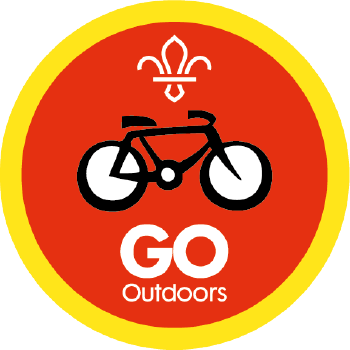Le tour des Scouts
You’ll need
- An equal number of bikes and helmets (three or four per section depending on size)
- Padlocks (optional to make challenge more difficult)
- Set up your bases before you start the activity. You’ll need to set up three different ones:
- First base: lay helmets on the ground for participants to safely put on. They’ll have to return their helmets to this base at the end of their circuit.
- Second base: mounting and dismounting. This is where they’ll mount their bikes before they begin the relay. It’s also where they’ll dismount and safely place the bikes away once they’ve finished their circuit.
- Third base: the cycling circuit. Make sure to mark this circuit on the appropriate terrain and away from traffic. You can do this with chalk, masking tape, cones or discs – the choices are endless.
All bases must be supervised by at least one adult or leader.
- Form three or four groups, depending on the size of the section or the number of bikes available.
- In a relay race manner, a member from each group should take on each of the bases at the same time, and then the next member of the group should go, until everyone has had a chance to complete the circuit.
- Each participant must follow this base order:
- First base: put on your helmet, making sure it’s safely fitted.
- Second base: safely mount your bike whilst being considerate of others’ space and needs to mount their bikes.
- Third base: cycle and complete one (or more) full lap of the circuit and cycle back to the second base.
- Second base: safely dismount the bike and put it away in an orderly manner, being careful of everyone around you. Run back towards the first base.
- First base: take your helmet off and carefully place it on the floor. Tap the next member of your team to start the circuit again.
- The team that finishes first, and has demonstrated they can do all the bases in the safest way, wins.
Reflection
This activity helped you put into practice most of the skills you need to achieve the Cyclist Badge. Is there anything you’ve learnt about cycling you didn't already know? Are there any skills you'd improve? How would you go about it? What have you enjoyed most about this activity? Did you work well as a team? Did working as a team make it easier or more difficult? What did you find most difficult about this activity?
Safety
All activities must be safely managed. You must complete a thorough risk assessment and take appropriate steps to reduce risk. Use the safety checklist to help you plan and risk assess your activity. Always get approval for the activity, and have suitable supervision and an InTouch process.
- Cycle and wheeled activities
Use appropriate protective equipment. You must wear helmets. Wear elbow and knee pads as defined by your risk assessment.
To make the activity easier, ask members from the same teams to help each other at each of the bases.
Make the activity more challenging by adding more bases to it. For example, between putting on and taking off the helmet, they could unlock the bike before they mount it, and lock it back when they put it away, after dismounting it.
Those with mobility issues may not be able to take part in this activity. They could seek help from a buddy or participate in this activity on a wheelchair or as a judge.
All Scout activities should be inclusive and accessible.
Young people can discuss and design their circuit and add challenges to it if they wish.
